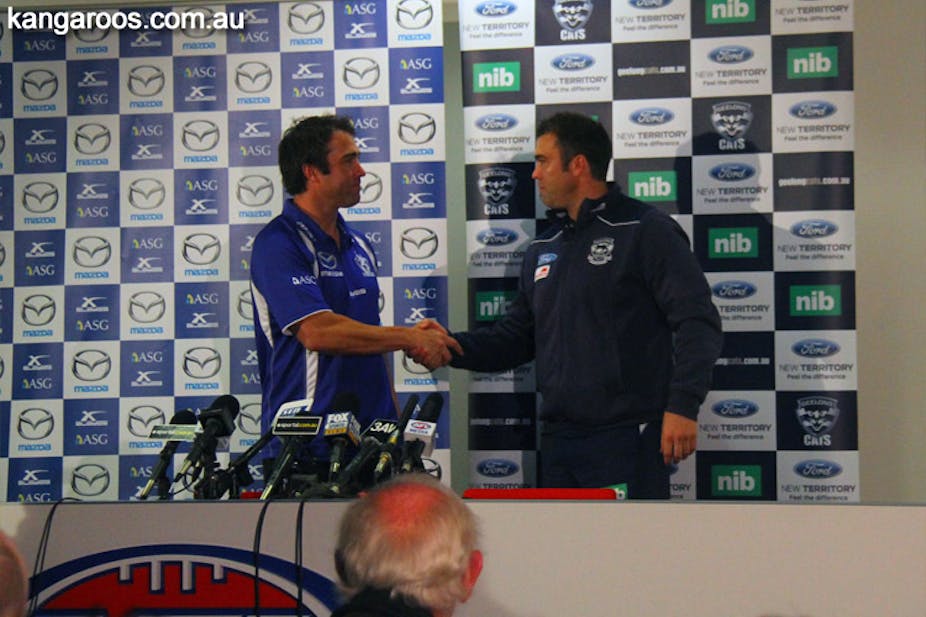Competition between twins hit the headlines this week as, for the first time in AFL history, identical twins Brad and Chris Scott will coach different teams against each other on Saturday.
Both twins played together for the Brisbane Lions, but have retired as players (they turned 35 on Tuesday). They now find themselves coaching North Melbourne and Geelong, respectively.
When it comes to things like appearance and many other characteristics, everyone thinks how similar twins are.
But when it comes to behaviours, attitudes and performance, another factor comes in to play that tends to make them less similar than they might otherwise be – competition.
It is not unusual for twins to want to be seen as individuals, and seek their own identity so they are not treated as one and the same.
This leads to some twin pairs deliberately dressing and behaving differently, talking up different hobbies, interests and sports.
Sometimes this “difference” can be forced on them by circumstances, just as it has for Brad and Chris who find themselves competing against each other.
It is also not unusual for twins to end up playing sport in the same team. They share genetic talent and are brought up in the same environment, training with each other. There have been 20 twin pairs who have played AFL.
One high profile pair of dizygotic (non-identical) twins in Australian sport is Steve and Mark Waugh. They were both highly talented batsmen and bowlers, and fulfilled the role of all-rounder.
Traditionally, there’s only one all-rounder in the Australian test team, and so Stephen and Mark found themselves competing for the same position.
In fact, Mark’s first baggy green cap was earned at the expense of Steve’s position in the national side!
They have both gone on to have outstanding careers since, though it took time for the selectors to identify each twin’s own particular strengths to allow them to play different roles in the team.
Genetically identical twins develop when a single fertilised egg splits early on in its development, producing two children with the same genetic make up.
These are called monozygotic pairs. On the other hand, dizygotic pairs (also called non-genetic or fraternal pairs) develop when two separate eggs are fertilised by different sperm at or around the same time. They are born together and share, on average, half their genes.
Scientists interested in a particular characteristic, whether height, blood pressure, number of moles, IQ, or the effects of a particular disease, have understood that if monozygotic twin pairs are no more similar than dizygotic pairs, then genetic factors cannot be playing a role in that characteristic.
If, for the characteristic of interest, monozygotic (identical) pairs are more similar than dizygotic pairs, scientists consider the role genes might play in determining why people differ in that characteristic.
The effect of competition in making twin less similar, as distinct from the effect of sharing genes and environments making them more similar, is an important consideration in understanding how twins can help us learn about people in general.
The Australian Twin Registry
Realising the role twins can play in scientific and medical research, the National Health and Medical Research Council has funded the Australian Twin Registry for more than 30 years.
Over 35,000 pairs of Australian twins have registered to participate in research studies, and over the years more than 200 studies have been conducted.
These studies provide major insights into the causes of a wide range of diseases. The growing understanding of the human genome means twins will continue to play a vital role in helping combat major diseases and developing ways of achieving better health.
If you are a twin, please consider joining the Australian Twin Registry by calling 1-800-037-021 (free call).

